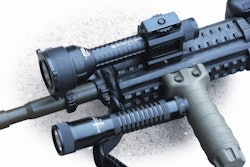Most police officers know how to stay safe in dangerous situations. From building searches to high-risk car stops, we have been trained and trained until safe techniques are ingrained into our very selves.
However, most departments forget to train officers for one very dangerous time in their jobs, a time when a great majority of attacks on police officers occur. During this time, officers routinely drop their guard and become complacent, despite the statistics showing this is when most attacks will occur. What time are we talking about? The “safe” times, after a suspect has been arrested.
Let’s take a look at the most common situations where we as officers are lulled into a false sense of security, and ways to avoid making the mistakes associated with those times.
When a Suspect is Handcuffed (in the Field)
This is a hot training topic for a reason. Contacting a suspect on the street is dangerous enough, but the risk amplifies when officers go hands-on. Most suspects will cooperate initially, especially if they think they can bluff their way through the detention or if they have been around law enforcement long enough to know the routine. However, once an officer reaches out to grab a subject’s hands or pat search him, his demeanor can quickly change.
Once a suspect senses you mean business or figures out he can’t bluff his way through a detention, his internal “fight or flight” mechanism kicks in. This can cause him to run away, or to stay and fight. Either way, your detention just got ratcheted up a few notches on the danger scale, and you need to be ready for it. Your preparedness will have a direct result on the outcome of your detention.
Most defensive tactics instructors pay special attention to this specific situation, and give it extra time and effort in their classroom sessions. Pay attention when your department has internal training on this topic. Too many officers think a suspect will continue to cooperate because he’s been compliant for most of the stop up to that point. Don’t make that mistake.
When You’re Driving a Suspect to Jail
Every police officer has a story about the suspect who slipped the handcuffs and was able to either escape or take off the cuffs during transport or booking. So, if we are all so well versed on the downfalls of handcuffs, why do so many officers get surprised and assaulted each year while transporting suspects to jail?
The answer? Complacency. As officers, we are transporting suspects on a daily basis. This can lead to the lackadaisical attitude that can be so deadly in police work. Just because a suspect is handcuffed and secured in the back of a caged patrol car doesn’t mean you are completely safe. Many officers miss weapons or other contraband during their initial pat-down searches, but you had better believe your arrestee remembers where they are. He or she will be trying very hard to discard those items or use them if there’s any chance to do so.
Many people who have had a lot of contacts (or arrests) with law enforcement have learned how to “slip their cuffs,” or get out of their handcuffs while in custody. Many more have learned how to move their arms from behind their backs to the front of their body. This gives them a lot more mobility, and should be viewed as an attempt to escape or to assault an officer when given the chance. While many arrested persons do this just to “show off” or annoy officers, a select few do it to gain the use of their hands. Don’t be fooled into complacency here, folks.
Keep your guard up while transporting people and deal decisively with those who try to slip their cuffs. Don’t let any suspect gain an edge over you, no matter how slight. Keep every advantage in your court.
When a Suspect is Being Booked
The call is complete, right? You did your investigation, collected the evidence, and arrested the bad guy. All that remains is the booking and paperwork, right? Wrong. Your jail facility can be one of the most dangerous places in your entire department.
Take a moment to think about what occurs in your jail. You’ve just arrested someone, handcuffed him or her, and brought that person to jail. This isn’t going to land you on anyone’s Christmas card list. Then, you get to book them into custody and tell them all the charges they are facing. Oh, and by the way, you have to take those cuffs off to complete the booking process, and check your duty weapons at the door on the way in. Can anyone else see a recipe for disaster here?
Many officers fall into the trap of seeing the booking process as part of the “wrap-up” of the case. This couldn’t be further from the truth. The jail is not a place to become lackadaisical or to enter into a routine. Keep your guard up at all times. Too many officers have been jumped or assaulted inside jail facilities by suspects of all crimes. Some of the most brutal attacks have come from suspects of relatively non-violent crimes.
Don’t let your guard down just because you arrested this particular suspect for check forgery at a grocery store. Remember, you have no idea what else he has done, but he knows all too well. Keep an eye on your arrestee at all times, and don’t let him gain access to anything that can be used as a weapon. Keep your guard up and stay safe.
When a Suspect is Being Interviewed
This is another time when suspects are unrestrained and have a “free shot” at officers in a very confined area. Much like inside the jail, suspects will often view this as their “last taste of freedom” before getting booked and heading to county jail.
Be especially wary of suspects who like to “show you what they mean” or “talk with their hands.” These are both excuses for an interviewed suspect to stand up and move around the room more. If this is absolutely necessary for your interview, stand up with them and be on your toes. Don’t give them the edge. Keep an eye out for any movements toward the door or toward any potential weapons in the room, such as a pen or pencil or your tape recorder.
Many attacks occur when officers drop their guard and enter into what they deem to be a “safe” area. Remember, any time you are in the presence of an arrested person or suspect, you are way outside of your safe zone. Keep your guard up and remember the first rule of police work, to go home safe at the end of your shift. Stay safe everyone!


















